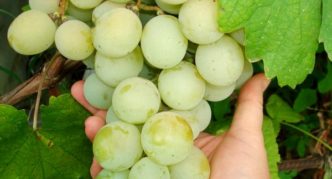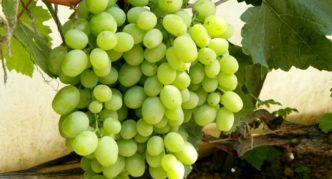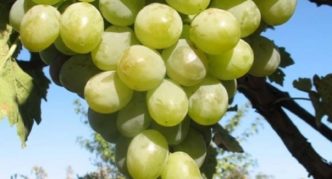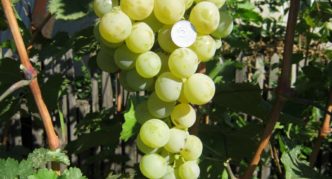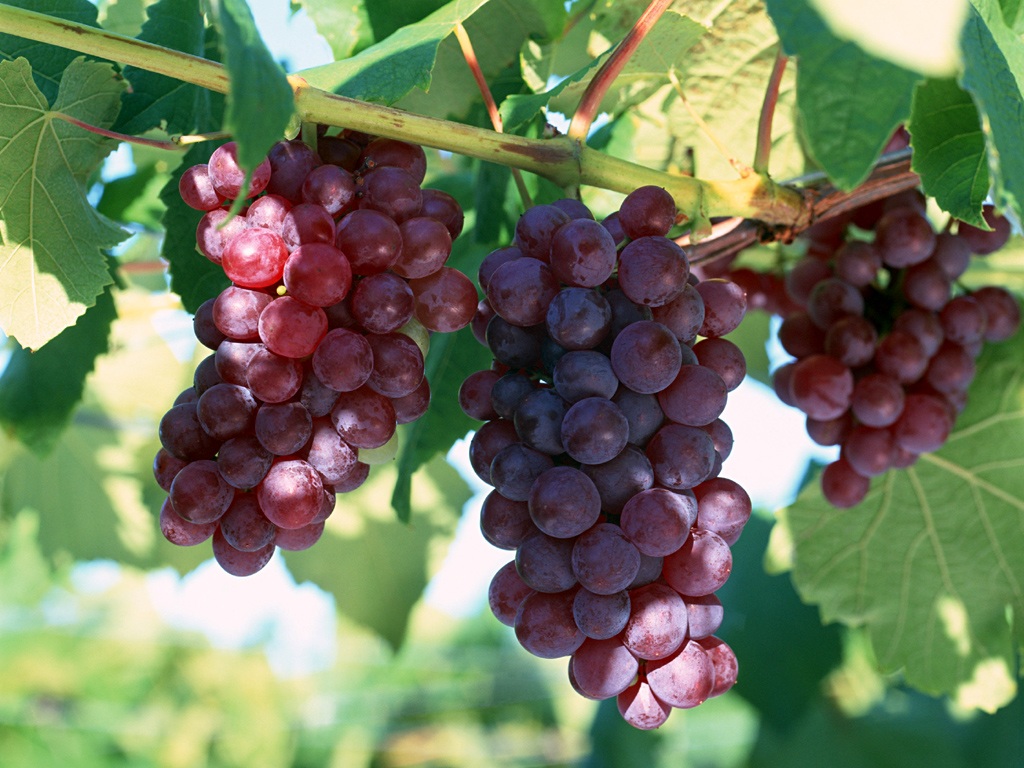The Kesha grape variety is well known to most gardeners. Self-fertility and high yield of Kesha are combined with an excellent taste of berries, the variety is considered one of the best table varieties of the mid-early ripening period. Due to its high frost resistance and unpretentiousness to growing conditions, it is planted both in the southern regions and in the conditions of central Russia.
Content
Breeding history, description and characteristics of the Kesha grape variety
Kesha grapes were bred in the Kuban, in the city of Novocherkassk, in VNIIViV named after ME AND. Potapenko, where they have been breeding grapes for seven decades. The work of the institute is aimed at obtaining new hybrid forms that can grow in northern regions with a harsh climate. And since there are a huge number of amateur winegrowers in the Kuban, there are no problems with the testing of new varieties, their comprehensive study does not arise.
Kesha's parents were the popular Moldovan variety Frumoasa Albe (White Beauty) and Delight, bred earlier in the same research institute. In this regard, the second name of Keshi - Improved Delight, they also know him by his number: FV-6-5. All the positive qualities of parental forms are also manifested in Kesha.
The name Kesha turned out to be so popular that it is included in the names of several more grape varieties, with which there are often misunderstandings, since, although they are somewhat similar, they still have significant differences from Kesha. These are, for example, Kesha-1, Kesha-2, Kesha red, Kesha radiant ... Moreover, a number of these forms are derived from Kesha and bear, in turn, several more names. For example, Kesha-1 is also called Talisman or Super Kesha. It has a number of advantages over the original form, but Kesha-1 has only female flowers and therefore needs pollinators. Kesha-2, obtained by crossing Kesha-1 and Kishmish Radiant, is also called Tamerlane, Zlatogor or Kesha Muscat. It ripens earlier and has a strong nutmeg aroma. But in this article we are talking about a grape simply called Kesha, without additional numbers or words.
Photo gallery: grape varieties with the word Kesha in the title
- Kesha has very small ovality of berries
- Kesha-1 is very slightly different in appearance, but dramatically different in care
- Kesha-2 is also very similar to its ancestor, but consumer properties are slightly different
- Only Kesha red is easy to distinguish by its appearance
- And in the radiant Cache, we again recognize parental traits
Kesha grows in the form of a very large bush, falling under the category of so-called gazebo grape varieties. Shoots grow very quickly, over the summer they can grow up to 5 meters, ripen well, about 80% of them are fruitful. Declared frost resistance - up to -23 aboutC, resistance to mildew disease is high, to other diseases of the vineyard is medium. Easily propagated by well-rooted lignified cuttings.
Kesha does not begin to bear fruit early: a guaranteed harvest occurs only in the fifth year after planting, but individual small bunches may appear already in the third year.Then the harvest grows annually and is generally very large. The variety is self-fertile, does not require pollinators, so for an ordinary family you can plant only one bush, and there will be enough berries. The variety is classified as early or medium early, since the ripening time of the berries depends both on the weather and on the care for the bushes. On average, it is just over four months from the moment the first buds open. Thus, in the southern regions, the berries become edible in the middle, and in the middle lane - at the end of August.
It is difficult to say with certainty about the shape of the bunches: on the same bush, both conical and cylindro-conical specimens can be found, or even completely shapeless. The comb is long. The size of the bunches is solid, but not gigantic: the average weight is about 800 g, some specimens can reach 1.3 kg. There is no peeling: all the berries are about the same size and are tightly pressed together. The brushes tolerate transportation well. When caring for bushes, it is recommended to leave no more than two bunches on each fruitful shoot.
The berries are white, yellowish, greenish at first, and when fully ripe they become amber. In full sun, they can acquire a brownish tan. The shape of the berries is almost round: the ovality is insignificant. Berries are large to medium in size: usually their mass is in the range from 10 to 12 g. There are 2 or 3 seeds in a berry. The skin is thick, but does not interfere with eating. The pulp is dense, fleshy, translucent. The taste is assessed as harmonious, but rather sweet. Total sugar content from 21 to 24%, acidity from 6 to 8 g / l. Mostly these grapes are used fresh. Stores well in the refrigerator.
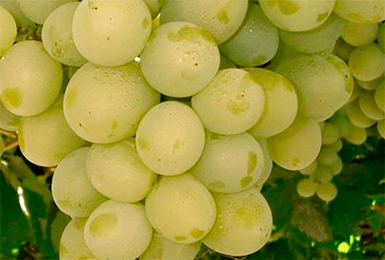
The color of berries is difficult to define in one word: it is different in different weather and in varying degrees of ripeness
Berries can remain on the bushes for a long time without deterioration of presentation and taste. With sharp weather fluctuations, they do not crack.
Video: Kesha grape harvest in September
Features of planting and growing grape varieties Kesha
Even novice summer residents can plant Keshu on their site, since caring for these grapes is very simple. Neither the planting rules nor the basic principles of care differ from those in the case of other table varieties. Kesha is a classic grape variety that requires light shelter for the winter.
Like any grape, Kesha likes sunny areas, sheltered from cold winds. It is desirable that from the north side the bushes are protected by a house wall or a high blank fence. Kesha propagates very easily by cuttings, the survival rate of which is very high. Therefore, if you get a stalk, you can grow a seedling yourself. When choosing a seedling, the main thing is that it has healthy roots. Immediately before planting, the seedling must be put in water for a day, slightly cutting off the tips of the roots so that it is saturated with moisture. You can plant grapes in autumn, but better in spring, in April.
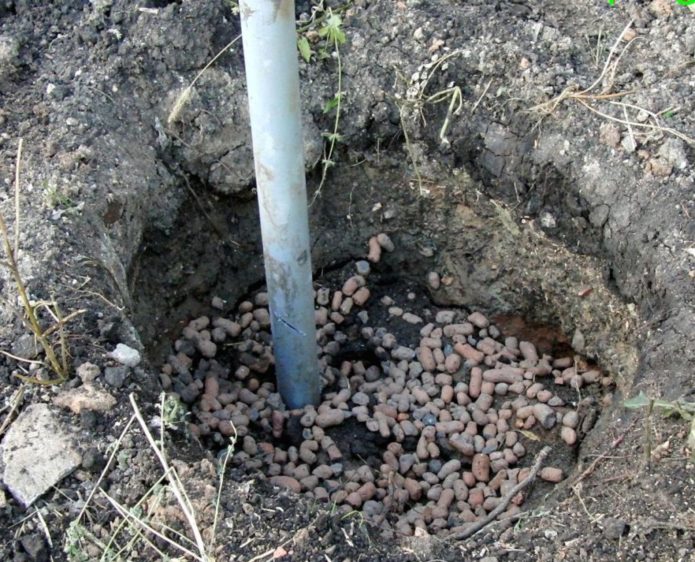
A pipe must be drawn into the pit for planting grapes; you can do without it only in the case of sandy soils
In addition, you need to drive in a stake to tie up shoots in the first year (then a strong trellis will replace the stake). It is necessary to plant grapes deeply so that no more than two buds remain on the surface. Watering the seedling well, you should mulch the soil around it.
Caring for Kesha is not difficult: watering, feeding, garter shoots, pruning, preventive treatments. Everything except trimming does not require any special knowledge.But pruning grapes is somewhat more difficult, but without proper pruning it is impossible: the harvest will only get worse every year.
Kesha is quite resistant to mildew disease, but for prophylactic purposes, early spring spraying with a solution of ferrous sulfate will not hurt. But it has average resistance to other diseases, especially in rainy years, so when 3-4 leaves appear on the shoots, it makes sense to prophylactically spray the vineyard with Ridomil Gold. On the green cone, that is, at the moment the leaves begin to protrude from the buds, you can spray with 1% Bordeaux liquid.
In early spring, before the start of sap flow, you can carry out a small pruning of vines. It is much more convenient to prune grapes in late autumn, before sheltering the bushes for the winter. But the main work on normalizing the bush from unnecessary shoots, stepchildren and, unfortunately, bunches must be done in summer, while the broken off areas are still green and small: according to the rules, no more than two bunches should be left on each shoot at Kesha. If you work hard in the summer, it will be much easier in the fall. The total load on the bush should be no more than 40 eyes.
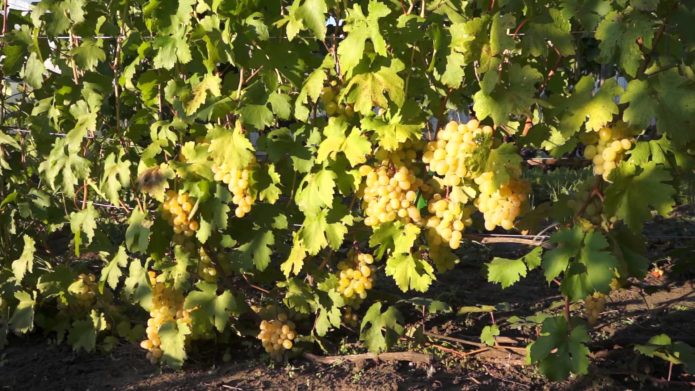
We must be prepared for the fact that the bush will be very large, strong trellises are needed, but the extra bunches will have to be cut
Before the onset of frost (approximately at the end of October), all vines must be removed from the trellises, tied into bundles convenient for handling them, and covered with any suitable materials on the ground. In not very harsh regions, spruce or pine spruce branches or dry foliage are suitable for this, in the northern regions they try to use non-woven materials or old clothes. The trouble is that under such a shelter, mice feel good, eating the bark close to the roots. As a result, the entire aboveground part of the bush perishes. Therefore, in the case of a serious shelter, it is imperative to lay out pesticides for rodents under it.
Advantages and disadvantages of the variety
Having considered the description of the Kesha grapes, we will try to give it a generalized description. Of course, for any reason, you can find the best and worst varieties, but if you compare it with the table varieties of the mid-early ripening period, this variety is one of the best. Kesha is considered one of the elite grape varieties. The indisputable advantages of Kesha include:
- high and stable yield;
- good commercial qualities of bunches and their transportability;
- great taste of berries;
- no cracking of berries and good safety of the crop on the bushes;
- fast growth and good maturation of shoots;
- ease of propagation by cuttings;
- high frost resistance;
- good resistance to mildew disease;
- ease of care.
Experts-winegrowers consider the relative disadvantages of the variety:
- average degree of resistance to major grape diseases;
- the need for qualified pruning and rationing of the crop, without which the berries are greatly reduced.
Video: properties of Kesha grapes
Reviews
Yes, the bush on the street gave an increase of 50 cm, and in the greenhouse five meters. Keshe is clearly cold in the suburbs
Kesha withstood the rains with dignity and the peas were insignificant.
I have Kesha. Vigorous. Ripening period depends on summer weather conditions: 2008 - 5-10 Sept., 2009- 25-30 Sept. Hardy enough and winter hardy for our conditions. For 4 years, fungal diseases were not observed. Planted in autumn 2005. Normalized, green operations are carried out in the amount of pinching stepsons. First flowering in 2008 - 18 inflorescences. The second - 2009. 39 inflorescences. The average bunch weight was 600 g. From experience, it bears fruit on 3-5 nodes of shoots. Practical pruning will be done for 9 buds. The taste is simple with sugar, but not intrusive. When ripe, it does not like waterlogging, the berry crushes itself and bursts, it is affected by gray rot. The molding is carried out with a high-standard under the hipped trellis.
Kesha's bush is 5 years old. In 2012, the signaling ripened on August 15, in 2013, 10 bunches, some more than a kilogram - on August 20 (now we understand that they were heavily loaded), in 2014 they made mineral fertilizing and watering - about 10 bunches ripened after September 10. This year the vine wintered badly, at the beginning of summer they again fed them with nitrogen fertilizers, as a result - odium, I had to process it with Topaz, after several times with soda, Tiovit. The disease was stopped, but there is no harvest, 3 brushes are still ripening, and we have a huge, uncontrollable bush. Conclusion: The variety is good, early, I like the taste, but does not like watering and feeding. The previous 4 years, with minimal pruning, without any treatments, did not hurt anything. Let's fight for the bush.
The Kesha grape has become a classic example of table grape varieties, giving birth to several generations of its heirs. The combination of the positive qualities of both the Kesha berries and the bushes of this grape, in the absence of serious flaws, made this variety popular in the gardens of both amateur and professional winegrowers.
